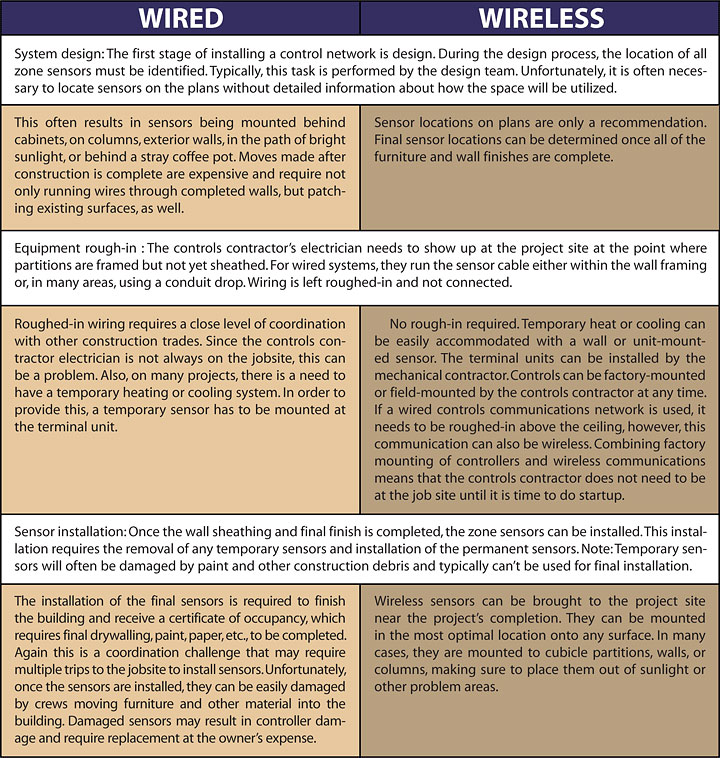
Much has been written about the many benefits of using wireless technology for building control systems. New products on the market make a strong case on the benefits of cost reduction in wiring, by many accounts reducing system installation costs by as much as 50%. While these are very real benefits, there is also a series of less tangible paybacks from using wireless technology. These come from the flexibility provided by being able to install sensors without the need for connecting wires. Space sensors cannot only be located where they will work best, but can be installed once wall finishes and furniture are in place. If an additional sensor is required, it is easy to add or relocate an existing sensor.
Even the construction process is greatly simplified, and significant savings are realized by the controls contractor because of the fewer trips required to the jobsite.
In order to understand these benefits, we need to look deeper into the construction process. The typical design and installation of terminal units (VAV, fancoils, etc.) for a new construction project follows a number of familiar steps. Let’s take a look at these for a traditional wired installation and for a wireless installation: IBT


